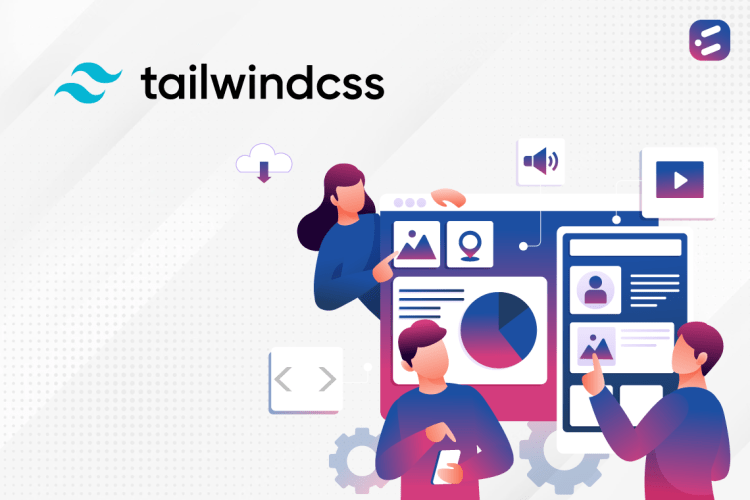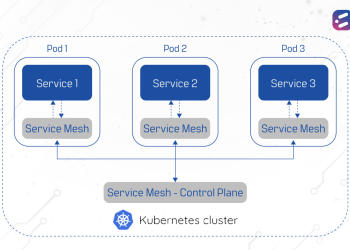While many front-end developers write custom styling for every new development project, it is easier and more efficient to use a CSS framework. Frameworks are a collection of pre-written styling classes using which developers can get moving faster, and typically include styling for elements required in every website (banners, navigation, image galleries, etc). While Bootstrap CSS is arguably the most used framework, Tailwind CSS has been rapidly gaining popularity since its launch.
First released in May 2019, Tailwind CSS is currently in version 2.2 and has a following of over a quarter of a million developers. Most developers find it particularly effective for React.js projects.
In-line styling
Tailwind CSS, unlike other CSS frameworks, is a utility-first framework that offers in-line styling. Other frameworks, and custom CSS, require separate stylesheet files. Tailwind allows users to build modern websites faster, without ever leaving the main HTML file.
In-line styling can be used to call a number of classes and design elements predefined by the framework. In many cases, almost any design can be built using these predefined classes, directly from your markup.
Differences between Tailwind CSS and Bootstrap CSS
While the major difference between Tailwind and other CSS frameworks is in-line styling (as discussed above), there are a few additional differences.
Widgets vs UI kit
Through Tailwind, you can use predesigned widgets to build a site from scratch, faster. Bootstrap is a mobile-first CSS framework built on a UI kit that comes with a set of pre-styled responsive components.
Complete customizability
Since Tailwind uses utility classes, neat, flexible and unique UIs can be created. On the other hand, Bootstrap sites follow a relatively generic pattern which can cause websites to look similar or even identical.
Learning and efficiency
Since Tailwind is a newer framework, it is growing in functionality, references, tools, popularity and complexity. This means that it is more challenging to learn and there are fewer dependable resources. Bootstrap, having been around since 2010, is more reliable and has a larger community – which makes development using Bootstrap more efficient.
File size
Tailwind needs only a single base stylesheet file, amounting to as little as 27kb. Bootstrap needs four CSS files for the full benefit of the framework – over 300kb in size, all together. This makes websites developed using Tailwind lighter and faster.
So why use Tailwind?
- It makes development faster: Since you don’t need to switch context as much, and you are not fighting against the framework to make customizations, it’s much faster to create custom designs using Tailwind than with other frameworks or using custom CSS.
- It’s more responsive: All utilities are generated with responsive versions to make the site suitable for all screen sizes. It also offers @screen and @responsive directives, using which responsive custom classes can be generated.
- It makes site loading faster: In addition to requiring fewer stylesheets, CSS becomes as small as possible using PurgeCSS, making site loading faster. Since the CSS is not edited each time there’s an update, the user does not need to download a new file every time. This is a significant site cache benefit.
What are the drawbacks?
- It’s harder to read the code, as developers are used to reading code and styling separately.
- It takes time to learn. However, since the classes are predefined and the same syntax is used across projects, it’s easy to use Tailwind once learned.
- Some styling components are excluded from Tailwind’s predefined classes (including headers, buttons, and navigation bars), and need to be developed from scratch. This means that some projects will need separate CSS stylesheets, even though Tailwind provides in-line styling.
The bottomline
Tailwind CSS is a solution that every front-end developer must know, as it gains popularity and has significant development and usability benefits. It’s an excellent solution for experienced developers familiar with CSS, but may not be the right choice for those who do not wish to spend time learning a new CSS framework for a particular project.
CloudNow has had considerable experience with development using multiple frameworks and languages. Contact us to ensure that your next project is launched with the right CSS framework.













